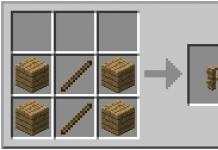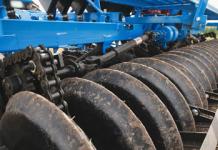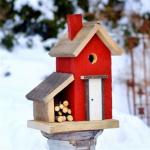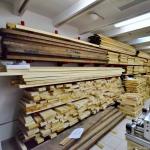Do you dream of expanding your living space, but don't know which extension to choose? A beautiful and functional extension allows you to make the house more spacious by adding the necessary square meters. To find the veranda option that meets your expectations and the architecture of the place, use the house extension photo ideas. 














How to make an extension to the house?
If you own a private home, in most cases you can always increase your living space with an extension. Do you want a custom porch to adapt to your needs? Consider the following photos of home facades to make your dream come true. 

Start from the budget allocated for the extension
Home extensions can be costly, depending on the project you're considering. However, it is always possible to find a solution for all levels of funding, even within the minimum budget. For more or less well-endowed projects, it would be better to install a veranda for the construction of a large extension. Attic development projects are in the middle of the price range, provided they don't have to deal with too many structural issues like access etc. Finally, the largest expansion projects, under the supervision of an architect, are in the high price range.



Choosing the Right Option
The construction of the veranda requires organization. You should definitely ask the experts what is allowed or not in your home, consult on the extension, voicing your desires - an additional room all year round, a relaxation area, a kitchen, a spa, etc. Be sure to follow the technical or regulatory details that need to be taken into account . You will have a clear idea of what kind of extension can be built, predicting the family budget. 


Tons of possibilities
Home extension or extension: A solution for expanding space without a huge capital investment. Create a new bedroom, study, new kitchen or living room to reorganize your home. Modern architects work for most extension projects. But be careful, because any expansion project, whether it's just adding a room, installing a veranda, or implementing an elevation, must follow certain rules.


Extension to a private house: several solutions
You can expand the area of \u200b\u200bthe house with an extension, which can be separate from the common rooms, acting as a separate corridor, or complement the living space. 



Side room extension
This is the preferred solution for owners of fairly spacious land. A side room extension allows you to add volume to a home with priority to create or change an area, providing a connection between two rooms (old and new). You can then let your imagination run wild by choosing the style of the new building.


entrance hallway
If you maintain a separation of the extension from the main habitat in the house, then the veranda will be in the form of a cozy corridor, which is especially useful in winter due to the heat after the street. Being a less used room on winter evenings, you need to heat this type of extension to a minimum. 



Living room addition
Unless you separate the veranda from the existing enclosure, for example by breaking a wall to create a large space, heating must be provided, even with good insulation. The design of the veranda also depends on the destination. An attached room can complement the kitchen or living room. 







Functional extension to the house
The use and location of the veranda will also affect the entire layout of the house. In some cases, you may need to modify some existing rooms to make the extension more functional. Consider photo examples that allow you to consider several options for verandas for living and relaxing, both open and closed. Both options will help create bright and comfortable spaces that make everyday life easier. The original extension of the house optimizes the comfort of life for all family members. 



Closed annex
The closed type of extension perfectly performs the functions of an additional room, if you take care of its interior design and insulation. Such an addition will not only harmoniously decorate the facade of the house, but also increase the comfort of the residential interior space. 





open veranda
If you want to beautifully decorate the entrance to the house, increasing the area of the porch, creating a comfortable outdoor recreation area in the summer, then an unglazed extension will help you with this. The veranda can be equipped with garden furniture, where you will enjoy the peace and tranquility of the surrounding garden. Such extensions are especially popular for cottages and country mansions. 







Verandas are the easiest way to expand your home
Building a veranda is a relatively easy way to change the square footage of your home. The cement slab is poured out and the veranda is ready to be assembled by the contractor. The wall to which the veranda adjoins must be reinforced, since it is load-bearing. The modern extension is an upscale structure with decorations, gables, whose charm is sure to attract everyone. You can choose both standard versions of the veranda and unusual ones, connecting the room with the living room or dining room. For good comfort, underfloor heating, blinds and maintenance all year round are essential. 




Extending your home with an extension is a solution that will add value to your home in the event of a resale, but will also improve your living conditions. To carry out this work, it is necessary to select the most suitable project, not forgetting to comply with the necessary administrative procedures and other urban planning restrictions. An extension to the house is a fairly often used solution for expanding living space. If the architecture of the building and the area of the landscape allow for such completion, then be sure to take this chance.
Tags:The construction of wooden houses has not lost its popularity even with the introduction, and an extension to a wooden house only complements it and emphasizes individuality. Quite often, over time, it is required to increase the living area of \u200b\u200bthe house or make a veranda near it. In such cases, an extension is being built, which can also be made from a variety of building materials.
It differs not only in its strength, but also in durability, environmental friendliness, and has excellent technical characteristics. The construction is made from wood that has undergone preliminary processing: drying and treatment with special insecticides.
An extension to a wooden house can be as:
- rooms,
There are a variety of options for extensions, which largely differ in construction technology.
 Summer kitchen attached to the side of a wooden house
Summer kitchen attached to the side of a wooden house Frame extension
The simplest and most common way to build an extension is a frame structure. This construction technology came to us relatively recently, but already during this time it was able to win the recognition of most people. This is due to the fact that the construction process takes minimal time costs. The whole structure in its properties is not inferior to the foam block structure. The frame extension to the wooden house is distinguished by its originality. The frame can be made of wood or metal.
You can use in the construction of an extension not only a wooden frame, but also a metal frame. It is not affected by weather and climatic phenomena, and is also resistant to temperature changes.
Before starting construction, it is necessary to clearly define the purposes for which such an additional structure will serve. The process of its insulation and the use of any materials will depend on this.
If the frame extension will be used as a room, then the insulation in it can be:
- mineral wool,
- polyurethane foam,
- Styrofoam,
- polystyrene foam and more.
For the manufacture of a metal frame, channels, pipes and fittings of different diameters and sizes are used. There are load-bearing beams that are larger in diameter, and there are auxiliary beams that can be smaller in diameter. All elements of the metal structure are fastened together by welding: electric arc welding or semi-automatic.
 Wooden frame extension to the house
Wooden frame extension to the house The wooden frame differs from the metal frame in its lightness. It is also strong and durable. You can also emphasize its environmental friendliness. Wood is considered a warm material, but despite this, the wooden frame also needs to be insulated with similar heaters and insulating materials.
Both the wood frame and the metal frame must be connected to the wood wall. Difficulties in fastening can arise only if the house is built from rounded timber, since its walls are uneven.
To fix the frame to the wall, reinforcement is first mounted in the wall, on metal "blunders", fixed inside the house. All gaps that exist between the frame and the structure must be sealed with plaster or foam.
The walls of this design can be sheathed with any modern finishing material. As a rule, plastic or siding is used as a facade finish for a frame extension. But for a structure made of wood, it would be more rational to use wooden lining. It has an attractive appearance and sufficient strength.
Before mounting a wooden lining, it must first be coated with several layers of varnish. Such actions can greatly extend the life of such a finishing material and help protect the facade from insects and weather effects.
Wooden lining can be of different sizes, which is convenient for choosing the best option. If you use siding or plastic, then you need to attach sheets of plywood or OSB to the frame. Their use makes the structure more durable and heat-intensive.
 Annex, finished in the same way as the main house
Annex, finished in the same way as the main house If in ordinary finishing siding or plastic must necessarily be attached to a special frame made of small wooden bars, then during frame construction these finishing materials are mounted directly on the surface of OSB or plywood using special self-tapping screws.
As for internal finishing works, they are carried out according to the principle of external finishing. On the insulation, which was previously laid, sheets of OSB or plywood are laid. Drywall can also be used inside the building, which is distinguished by its practicality and ease of use. It is plastered and then painted.
Read also
Installation of gutters on the roof of the house
The roof in the extension can be made single-pitched, since in this case it is necessary to ensure a fairly high-quality tightness of the connection between the roof of the extension and the roof of the main building. As a roofing material, metal tiles, ondulin and other materials are used that can be aesthetically combined with a wooden structure.
In this video you can see how to make a frame extension to the house step by step
Very often, an extension to an old wooden house is a frame one, since it does not have much weight and cannot act on the walls of the building, which will make it possible to operate the house for a long time.
 Frame extension to an old house
Frame extension to an old house Before attaching anything to an old wooden house, you need to assess the condition of its walls: whether they need to be strengthened or restored.
Porch extension
The porch extension also belongs to the frame extension, since basically such a structure is made on the basis of a wooden frame. The porch has no walls, but has a concrete base. It can be made during the construction of the house itself, or it can be poured over time.
In the latter option, it would be better to make a small foundation under the porch, which should be connected with reinforced concrete to the base for the house.
This is necessary in order to ensure the strength of the structure with its additional extensions, since the soil in the areas can be different, and depending on weather conditions, it tends to sag, which will entail possible deformation.

The porch is made of both metal and wood. It all depends on financial possibilities. The construction of an extension with walls will be similar to a frame structure, only insulating and insulating materials can be omitted.
A metal porch with railings will look very original, as these peculiar fences can be made with artistic forging elements. The roof of this design, as a rule, is made of polycarbonate. The translucent material harmoniously complements the extension to the wooden house.
 Metal porch roof made of polycarbonate
Metal porch roof made of polycarbonate Advice. Polycarbonate has a different thickness - those types of this roofing material that have a thickness of at least 0.7 mm have greater strength and durability.
Room extension
As soon as each family member ceases to have enough usable space in a private house, they immediately begin to think that an extension of the room is simply necessary. This is already a residential extension, and its construction will need to be approached responsibly.
The extension of the room can be made of brick, foam block, wood, cinder block.

The use of any of the materials implies the construction of a foundation for them. The difference in building materials (the main building is made of wood, and the extension is made of any other material) can play a big role in the strength and reliability of the house as a whole.
A brick extension to a wooden house is built on a monolithic or strip foundation. It has high strength and durability. By itself, a brick is considered a cold material, but with proper and high-quality insulation, it can maintain a constant temperature in the room.
When choosing the type of foundation for an extension, you need to build on the main foundation. Any foundation is laid under a wooden house, depending on groundwater, since wood is a light building material. But more often a pile foundation is used. It is better not to use this type of foundation under brick walls, since the weight of the entire structure will be quite large.
It is for this reason that it is better to give preference to a monolithic foundation, which in its structure is considered an integral structure, and can withstand a variety of loads on it.
To build a monolithic foundation for a brick extension, a trench is first dug, the depth of which largely depends on the size of the extension itself. As a rule, it is at least 0.5-0.7 m.
Layers of sand and gravel are laid at the bottom of the trench, a pillow is formed for greater strength and durability of the base. It is better to knead the concrete solution in a concrete mixer so that it is freshly prepared, since concrete tends to harden very quickly, and it simply will not work to make the base a monolith.
 The project of a brick extension to a wooden house
The project of a brick extension to a wooden house Formwork is preliminarily made along the perimeter of the trench. It can be non-removable, that is, after manufacturing, its elements are not removed.
The solution for such a foundation consists of:
- cement brand 400 or 500;
- sand, preferably river and without impurities;
- crushed stone is not too large, granite can be used (it does not undergo deformation and can withstand sufficient loads);
- water;
- fittings.
A metal frame in the form of a mesh is made from reinforcement. It is placed in a trench on sand and gravel. After that, cement, sand, crushed stone and water are mixed. All proportions that are necessary for a quality foundation must be strictly observed, since the strength of the entire structure will depend on this.
The concrete solution is poured into the trench in parts, while it is necessary to ensure that none of these parts begin to harden. Otherwise, the foundation will no longer be a monolith and will lose its strength.
We will send the material to you by e-mail
An excellent way to increase the area is an extension to a wooden house. Projects of such structures are striking in their diversity and scale. After choosing a suitable project, you need to prepare special materials. An additional extension is useful when creating a kitchen area, or a luxurious terrace. Any room can be built independently, but it is necessary to choose the right type of building.
Extension option
Extension to a wooden house: projects of structures from various materials
Some time after construction work, it may be necessary to increase the usable area. A wonderful way out can be the creation of an extension to a wooden house. Projects of various structures can be seen in the photo.
When choosing the architectural form of the structure, do not forget about creating a single style ensemble. Such a structure requires special documentation and permission. Before construction work, it is necessary to study the technological features and design options.
It is worth considering the following options for extensions:
- Simple designs include or a dining area. It is used to protect against bad weather and sunlight. Under a canopy, you can have picnics and receive guests. For its construction does not require a strong foundation. Pillars are installed as supporting supports, to which the frame and intended wall surfaces are attached.

Such structures are often built from logs, timber, foam blocks, and also from bricks. Frame technologies are often used.

Expert point of view
Dmitry Kholodok
Ask a Question“The option under a common roof is considered more convenient and profitable. When using superstructures, it is worth calculating the strength of the base.
Related article:
Extension to the house from the frame: features of design and installation
When making an extension to the house from the frame, significant costs will not be required. This is a budget option. The construction is made on a frame basis, which consists of bars or planks made of metal. After the installation of the frame structure, the walls are clad on both sides. In this case, OSB or chipboard plates are used. Heat-insulating material is laid between the plates. It can be polystyrene foam or mineral wool.

In terms of thermal insulation properties, frame structures are not inferior to more solid stone or brick buildings.

Construction work is carried out in several stages:


Expert point of view
Dmitry Kholodok
Technical director of the repair and construction company "ILASSTROY"
Ask a Question“For a frame structure, a foundation is required. You can use a tape construction with waterproofing.
Extension to the house of foam blocks: photos of interesting projects
You can build an extension to the house from foam blocks.

This design is in demand due to the following features:
- The material is available at an affordable price.
- To mount the structure, it is not necessary to mount a complex and expensive foundation.
- The elements hold heat well. This is possible due to the porous structure and low density index.
- Foam blocks are produced in overall dimensions, which affects the speed of construction.

For structures made of foam blocks, a special foundation is required. It can be a tape or monolithic base. Be sure to use high-quality waterproofing. Construction work starts from one selected corner. After installing two rows. This is necessary to ensure better adhesion of the elements.

An extension to a wooden house made of timber: installation nuances and style features
A beautiful and solid extension to a wooden house can be made from a bar. Projects and photos of individual can be found on the Internet.

The material has the following features:
- The production of timber is carried out according to factory technologies.
- The surface is treated with a special composition that protects against fungi and decay processes.
- Naturalness and high environmental friendliness are considered important advantages of the material.
The extension must be connected to an existing building. Usually, the same foundation is made for the structure as for the main building.

For living quarters, a separate foundation and a special wall should be created. The void and the gaps between the two walls are blown with mounting foam. This will prevent damage to the wall of the building when the new extension shrinks.

A more economical option for the foundation is pile. The walls are built from profiled timber. After installing the first row, the surface of the tree is treated with antiseptic compounds. Then lags are mounted on it. Voids and cracks are filled with special heat-insulating material.

Each row is fastened with wooden dowels. Particular attention should be paid to the installation of corner zones. For this, logs with a ledge and a groove are used for a stronger grip.
For your information! Reinforcement is used to unite the two foundations.
Before proceeding with the construction, one should take into account some of the nuances of installing an additional structure to the main structure. The length of the new structure should be in harmony with the length of the main building wall. The width of the additional structure can be any.

The extension does not have to be adjacent to the wall where the entrance to the house is located. Access to a spacious veranda or kitchen area can be from the living room. If a bathroom is planned in an additional structure, then the exit can be made from or. A suitable location for the structure is considered to be the front or end part of the house. The choice and amount of material depends on the type of future structure.


Article
Over time, the owners of private country houses and cottages with a year-round residence are faced with the need to increase the usable area of their homes. For example, one of the reasons may be the birth of a child or simply the desire for space, since the available area is too small. The frame extension in this case is seen as one of the best solutions. The features of the construction of such a structure, the procedure for its legalization will be discussed in this short article.
Extension Features
The big advantage of the frame extension is the possibility of its interface with a house built from any material, whether it be logs, bricks, blocks or bars.
The design features are generally presented in the diagram below, however, they are almost completely identical to the nuances.
How to make a frame extension to a brick or wooden house?
To build with your own hands, you will need some set of tools. The figure below shows a typical variant of such a set.

The presence of at least one assistant is also desirable, since a number of works cannot be done alone, and working with someone is always more fun.
Interfacing with the main house

Regardless of due to the difference in the magnitude of the load that the cottage and the extension exert on the ground, there is still the possibility that over time they will move relative to each other. For this reason, experts strongly do not recommend a rigid type of adjoining an extension to an old house; it is more expedient to use an adjunction similar in principle to a groove-comb connection. To install it on the wall of the capital structure, you need to fix two beams, and install a vertical beam between them, which is an element of the frame wall of the extension. This type of junction will ensure the leveling of mutual movements. Of course, you can use a metal frame instead of wood, then all embedded elements will also be metal. Or you need to use a bolted swivel.
However, the connection of the extension is not limited to walls alone; it is also important to connect two roofs correctly. To do this, the rafters at one end must be docked with the upper trim of the frame, and at the other - fastened with the roof truss system of the old house. The crate under the roof is mounted in such a way that the junction of the old and new roof is between the elements of the crate.
As a roofing material, it is necessary to use only one that has a certain degree of flexibility, for example, soft tiles or corrugated board with a wave height of not more than 10 mm. But slate or ceramic tiles are no longer suitable for these purposes.
Step-by-step instruction
1. Installation of the foundation

The first stage of construction is foundation work. Usually, a separate foundation is arranged for the extension, which must be connected to the base of the old house with the help of special embedded fittings.

Of course, the most preferred option is the common foundation laid back at the stage of construction of the first house, however, few of our compatriots look so far, which, however, is quite understandable and understandable in everyday life. When laying, it is necessary to ensure maximum identity not only in shape, but also in depth of both structures.

If it is impossible to achieve full solidity, then a so-called expansion joint must be left between the two foundations so that when the soil moves in the spring, cracks do not form on the walls of the extension and at the very base.
Strapping - the second stage of the construction of the extension. The thickness of the walls of skeletons is usually 20 cm. Living rooms are rarely placed in extensions, which makes it possible to reduce the wall thickness to 10 cm. Therefore, the diameter of the strapping beam and the cross section of the vertical racks will also be 10 cm.

The figure below shows a possible installation scheme for the lower trim of the extension:

When assembling the frame, the most attention should be paid to fastening the racks. The figure below explains its features.

The upper strapping is fastened according to the same principle as the lower one. The side view is shown in the figure below.
5. Sheathing and insulation of the ceiling
The ceiling, like the walls inside, is best sheathed with clapboard. This is the most favorable option from the price and aesthetic points of view. Pine lining will last at least 30 years, and even more with proper care. To insulate the ceiling in order to save money, you can use expanded clay, pouring it on top with a layer of 10–12 cm.

A possible installation option for the truss system is shown in the figure below:

The process of fastening the roofing material does not differ in any nuances, except for one: the upper part of the sheets should be under the roofing material of the main building. To do this, you may need to remove some of the fasteners. An approximate diagram of the roofing "pie" is shown in the figure below.

The ultimate goal of any construction work is the creation of a durable structure, in which it will be comfortable and cozy to live. The quality of the wall "cake" has the most direct and decisive influence on the achievement of this goal. When insulating the walls of a frame house or extension, you need to remember that properly installed steam and wind insulation is the key to a long service life without losing the performance of any type of insulation. If you forget about it, then the insulation will very quickly absorb moisture from the environment and become unusable.
If we consider the layers of the wall "pie" from the inside of the frame extension, then they should go in this order:
1. Inner lining,
2. Air gap (10–20 mm),
3. Vapor barrier,
4. Insulation layer,
5. Wind insulation,
6. Exterior finish.
As wind protection, you can use traditional roofing material or glassine.
The second option is more preferable, since it does not deform when exposed to high ambient temperatures. When installing vapor barrier membrane materials, it is necessary to place them with a smooth surface towards the thermal insulation layer, and a fleecy one towards the room. The villi do not allow condensation to form on them, which prevents excessive wetting of the insulation.

Insulation of the annex is one of the most important factors for a comfortable stay in it in the future. In fact, all the nuances regarding fully coincide with the features of the insulation of full-fledged houses built using frame technology. For insulation, you can use a variety of materials, both traditional and more modern: ecowool, sawdust, basalt mineral slabs, extruded polystyrene foam and much more. From the point of view of speed and ease of installation work, mineral plate insulation is still the best.
Such a heater must be tightly laid between the frame racks in several layers, but without kinks and pinches, which over time can lead to the formation of "cold bridges". An important feature in the course of work is the need to shift the joints between the plates relative to each other in adjacent layers. This principle must be observed not only when insulating walls, but also the ceiling and floor.
Possible mistakes
To complete and re-plan an existing structure is always more difficult than building from scratch, so you should once again pay attention to in the process of building a frame extension.
First and foremost, many inexperienced builders rely on factory processing of all lumber. However, this is wrong, all elements of the frame must be well dried and treated with fire-retardant impregnations before assembly. Window frames and doors must be installed strictly according to the level and fixed to the already installed vertical racks, that is, the dimensions of all openings must be calculated at the planning stage.
How to legalize an extension to the house?

When all the construction work on the construction of the frame extension is completed, many of our compatriots begin to think about the need to legitimize the resulting masterpiece of architecture. However, it is better to think about this before starting work, since the process of legalizing an unauthorized structure is a little more complicated, you will have to go to court, moreover, the result may not be in favor of the plaintiff and then you will have to demolish all the resulting beauty, and at your own expense. Of course, you can not go through the circles of bureaucratic hell and leave everything as it is, but this will entail the impossibility of selling, renting, bequeathing or donating the whole house, and not just an extension.
When applying to the courts, you will need a whole set of various documents, among which the most important are the following:
- Certificate of ownership of the land;
- Certificate of ownership of a residential building (cottage);
- Help from BTI;
- Permission from the housing and communal services organization;
- An extract from the house book on the number of registered citizens in a residential building;
- Frame extension plan;
- House project;
- Control survey of the annex on a scale of 1:500;
- The consent of the neighbors, if the extension borders their site;
- Act of the epidemiological service.
In some cases, you may need a photo of the site, living quarters and an extension to it.
The preparation of the statement of claim must be taken with all responsibility, since the process can be lost due to errors made in it. Most courts will provide an application form and help you fill it out.
After filing a claim, you need to wait for a response, which should be sent by mail. To make sure that the application is accepted, after 10 working days you can call back and clarify the information. It should be borne in mind that the judges have only 2 legitimate reasons for rejecting the claim: the existence of a court decision regarding the legalization of this building or an incorrectly drawn up document of claim. The second option is to reapply.
The municipality will become the defendant during the court session, and the owner of the house to which the annex is made, respectively, will be the plaintiff. When the court decides in favor of the plaintiff, he will need to obtain a payment receipt from Rosregistration for paying the state duty and make a payment, after which the owner will be issued all the necessary documents legitimizing the unauthorized construction.
As for other monetary expenses, approximately 10,000 rubles will be spent on collecting all the necessary information (consultations with lawyers, etc.), the price of the state duty is currently 500 rubles, 20,000 rubles for an entry in the Urban Planning Cadastre, about 60,000 more rubles will be required by specialists for judicial construction and technical expertise. Thus, in addition to direct construction costs, about 100,000 rubles will be needed for all bureaucratic delays.
Video
Watch a video about how the construction work was carried out on the frame extension to the house.


















